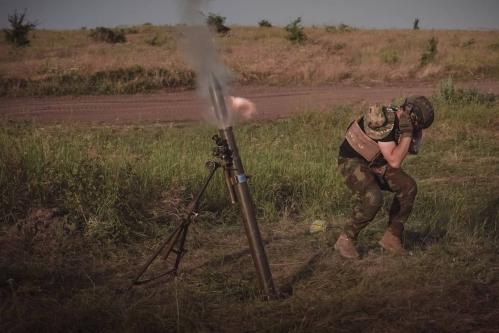Reproduced by permission of The Globalist.
View part one of this article, “Sibera – Communist Megalomania?“
Moving vast numbers of people from warmer to increasingly colder and remote areas of the country is unprecedented elsewhere in the world.
Frozen apart
In fact, it is the biggest mistake the Soviet Union made economically and politically. It is also the hardest part of the Soviet legacy for Russia to change.
Today, in stark contrast with the United States, Russia’s population and industry are scattered across its territory in large cities and towns with few physical connections between them.
Some cities—like Noril’sk, the home of one the world’s largest metals companies with a population of almost one quarter of a million people—are so distant that they can only be reached by airplane.
Other towns in Siberia are cut-off from the rest of Russia and the world—apart from flying in by helicopter—for all but a couple of weeks in the year. And Russia has more people in large, cold cities than in any other country in the world.
A warmer alternative
In the United States, cold cities like Fargo in North Dakota, Duluth in Minnesota, or Anchorage and Fairbanks in Alaska are relatively small—between 100,000 and 250,000 people.
Really big cities of 500,000 to one million people in cold places—like Minneapolis-St. Paul in the United States, or Winnipeg, Edmonton, and Ottawa in Canada—are warmer than their Russian counterparts and few in number.
Instant and icy
Russia has nine cities of one million or more people colder than Ottawa—and 30 cities as big and as cold as Minneapolis-St. Paul.
Notably, none of these really big, really cold Russian cities in Siberia were very large or—in some cases, like Noril’sk—even existed before the 1920s.
Siberia’s largest city, Novosibirsk (with a population of about 1.5 million), for example, only had 8,000 people recorded in the last Tsarist census of 1897 before the Russian Revolution
Unbearable costs
Costs related to overcoming the disadvantages of distance and the cold have now become a permanent burden on the Russian economy.
These costs are one of the major reasons why Russia has not developed as fast as analysts expected it to after the collapse of the Soviet Union. It also explains why it has not been able to integrate into the global economy—except for oil, gas and other commodity exports.
Irreversible migration
Unfortunately, the trend of migration into the cold has not reversed itself in Russia since the collapse of the USSR.
In contrast, over the last 70 years in the U.S. plains states, the descendants of the homesteaders of a century ago have been moving steadily off the farms.
They have left remote towns for big cities—and also moved away from the colder states to warmer places, like California and Florida.
In many cases in rural areas of the plains states, there are fewer people today than there were in the 1950s. In a few instances, there are even fewer people than in 1900—even though the U.S. population overall continues to increase.
Continued growth
Just as the American plains were emptying out, Siberia’s population in contrast grew through immigration and high birthrates (thanks to the fertility of its population, as young workers and their families moved in).
Siberian population growth ended only in the late 1980s—with the collapse of the Soviet Union.
Left out in the cold
In Russia, people now find themselves stuck in the cold, remote places Communism put them—even as unemployment rises and living standards fall for the bulk of the population in Siberia.
Although Russians have moved from remote towns and villages in Siberia into the larger cities over the last decade, as in the United States, they have not been able to move completely out of the region—from the permafrost and the frost belts to Russia’s equivalent of the sunbelt.
Numerous factors conspire to prevent people from moving to other, warmer parts of Russia: Residence restrictions in cities like Moscow, lack of savings and other resource constraints, poorly developed job and housing markets—and fears of Chinese immigration or even claims against Russian territory.
Frigid inspiration
Finally, in many respects, Siberia is more fully enshrined in the Russian psyche as the country’s heartland than the plains are enshrined in America’s.
Since the 18th century, the exploration and development of Siberia has played a role in shaping Russian national identity.
Source of future wealth
Siberia has been seen as Russia’s “treasure chest,” the source of new wealth, new territory—and also of old folk tradition and ritual.
Russian writers have extolled its virtues as the “untamed frontier” and a “New World” savior for the rest of Russia.
As late as the 1980s, a statement attributed to Mikhail Lomonosov—the great Russian scholar of the 18th century—adorned the walls of science classrooms in Russian schools, predicting that Russia’s future wealth would be found in Siberia.
Today, there is still something mythical and monumental about the thought and the reality of living in Siberia.
That homely feeling of “the cold”
For one, the very idea of “the cold” continues to define popular conceptions of Russia—abroad as well as at home.
Russia would be a more productive and prosperous place economically if its people came in from the cold. But most Russians might argue that it would be a less stirring and inspiring place for the soul.



Commentary
Russia – Coming In From the Cold?
February 23, 2004